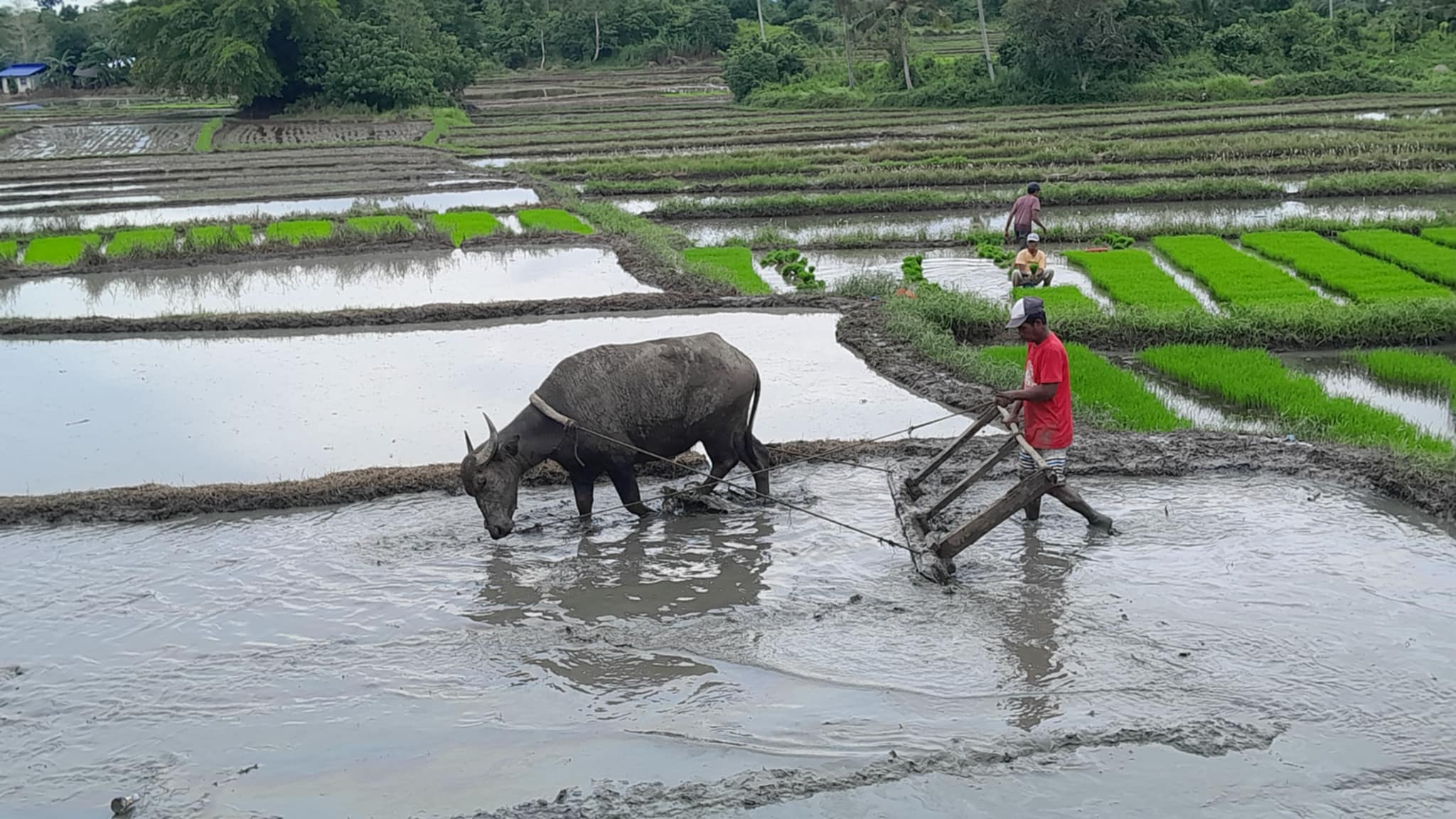Rice planting in full swing

After the good harvest, the Boholano rice farmers are now busy for their rice planting activities covering 58,222 hectares of physical rice areas in the province of Bohol for this wet planting season.
Maricel Barloso, the Provincial Rice Coordinator, said that most of the estimated 165,172 farmers are already engaged in planting, while only a few are still in the land preparation stage.
Barloso revealed that of the 58,222 hectares of rice areas in the province, 30, 416 hectares are rainfed and mostly planted with inbred rice, while 27,806 hectares are irrigated and primarily planted with hybrid rice using the farm machineries and carabaos.
Among all municipalities in the province, the town of Ubay has the largest rice area at 8,314 hectares. It is followed by Pilar (5,762 hectares), Dagohoy (4,128 hectares), San Miguel (3,750 hectares), and Carmen (3,707 hectares).
Other rice areas in Bohol include the following: Siera-Bullones (2,818 hectares), Talibon (2,750 hectares), Guindulman (2,484 hectares), Alicia (1,721 hectares), Trinidad (1,677 hectares), Candijay (1,640 hectares), Catigbian (1,521 hectares), Mabini (1,385 hectares), Calape (1,294 hectares), Bien Unido (1,250 hectares), Batuan (1,008 hectares), Bilar ( 1,002), Valencia (818 hectares), Buenavista (756 hectares), Sagbayan (719 hectares), Danao (696 hectares), Tubigon (694 hectares), Garcia-Hernandez (691 hectares), Jagna (682 hectares), Duero (628 hectares), Getafe (578 hectares), Sevilla (558 hectares), Inabanga (547 hectares), Balilihan (554 hectares), Dimiao (527 hectares), Antequera (502 hectares), Pres. Garcia (460 hectares), San Isidro (405 hectares), Loboc (399 hectares), Clarin (397 hectares), Loon (373 hectares), Cortes (131 hectares) Alburquerque (113 hectares), Maribojoc (110 hectares), Loay (105 hectares), Baclayon (89 hectares), Lila (84 hectares), Anda (83 hectares), and Corella (65 hectares).
Seizing the opportunity from the recent good harvest, the Provincial Government of Bohol (PGBh) is fast-tracking its Palay Buy-Back (PBB) Program at ₱24 per kilogram, with a 14% moisture content (MC).
According to PBB Focal Person Lorebien N. Lagapa, the program has already achieved 71% of its target, with ₱7,095,000 disbursed out of the ₱10 million total allocation. The remaining balance stands at ₱2,904,472.
Lagapa explained that under the Palay Buy-Back Program, the Office of the Provincial Agriculturist (OPA), led by Provincial Agriculturist Liza M. Quirog, MNSA, handles the procurement, drying, milling, and packaging of palay. Meanwhile, the marketing and selling of Bugas Bol-anon, which is sold at ₱40 per kilogram, is managed by the Provincial Economic Enterprise and Management Unit (PEEMU) under Liza Flores. By Atoy Cosap